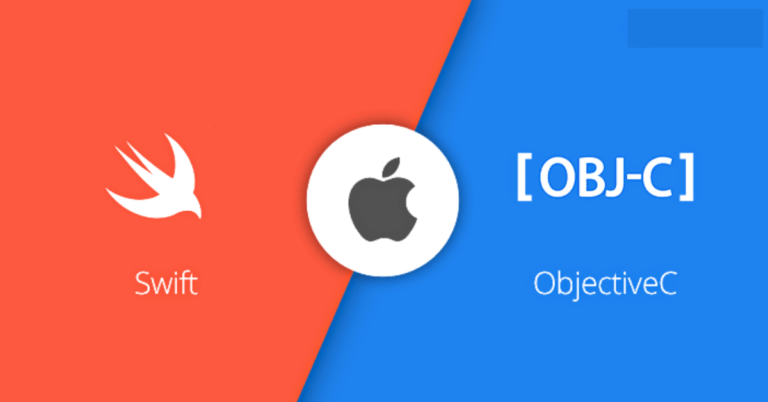In the ever-evolving realm of iOS app development, staying on top of the latest trends and technologies is paramount for businesses aiming to create exceptional mobile experiences for their users. When it comes to choosing a programming language for iOS app development, two prominent options have dominated the scene for years: Swift and Objective-C.
In 2023, deciding between these two languages can significantly impact the success of your iOS app. In this comprehensive guide, we’ll explore the strengths and weaknesses of both Swift and Objective-C to help you make an informed decision for your company’s iOS app development needs.
The Evolution of iOS Development Languages
Before diving into the specifics of Swift and Objective-C, let’s take a brief look at their historical context and evolution within the iOS development ecosystem.
Objective-C: The Pioneer
Objective-C has been the backbone of iOS app development for many years. It was originally developed in the early 1980s and became the primary language for macOS and iOS app development when Apple introduced the iPhone in 2007. Objective-C’s dynamic nature and message-passing syntax allowed developers to create robust and flexible applications. However, as technology evolved, so did the need for a more modern and efficient language.
Swift: The Modern Contender
In 2014, Apple introduced Swift, positioning it as the future of iOS development. Swift aimed to address some of the limitations of Objective-C and provide developers with a more powerful, safe, and efficient programming language. Swift quickly gained popularity due to its simplicity, readability, and performance improvements. Since its inception, Swift has undergone numerous updates and enhancements, making it an attractive choice for iOS app development in 2023.
Swift vs. Objective-C: A Head-to-Head Comparison
1. Performance
Swift is known for its performance improvements over Objective-C. It was designed to be faster and more efficient, thanks to its modern compiler technology. Swift’s performance gains are particularly noticeable in tasks like memory management and mathematical calculations, making it a better choice for resource-intensive applications. In 2023, choosing Swift can lead to faster app execution and a smoother user experience, a crucial consideration for any company aiming to provide top-notch iOS apps.
2. Safety
Swift places a strong emphasis on safety, helping developers write more reliable code with fewer errors. It includes features like optionals, which make it clear when a variable might be nil, reducing the likelihood of null pointer exceptions. Objective-C, while powerful, lacks some of these safety features, making it easier to introduce bugs into your code. For a company prioritizing the robustness of its iOS applications, Swift offers a significant advantage.
3. Readability and Maintainability
Swift’s syntax is more modern and concise than Objective-C, making code easier to read and maintain. This improved readability can lead to faster development cycles and reduced debugging time, ultimately saving your company valuable resources. Objective-C’s verbose syntax, with its frequent use of square brackets, can be more challenging to work with, especially for developers new to the language.
4. Interoperability
Interoperability is a crucial factor for companies with existing Objective-C codebases. Swift was designed to work seamlessly with Objective-C, allowing developers to integrate Swift into existing projects. This means your company can transition to Swift gradually, leveraging the strengths of both languages while maintaining compatibility with legacy code.
5. Community and Resources
Swift has a rapidly growing and vibrant community, which translates to a wealth of resources, libraries, and third-party tools available to iOS developers. This can be a significant advantage for your company, as it means quicker problem-solving and access to a broader range of capabilities. While Objective-C still has a strong community, Swift’s momentum suggests that it will continue to dominate the iOS development landscape.
6. Learning Curve
Swift’s modern syntax and focus on safety make it more accessible to new developers. If your company is looking to onboard talent quickly or expand its development team, Swift’s gentle learning curve can be a decisive factor.
Conclusion: The Ideal Choice for iOS App Development in 2023
In 2023, Swift stands out as the ideal choice for iOS app development for most companies. Its performance improvements, safety features, readability, and strong community support make it a powerful and future-proof language. However, it’s important to consider your company’s specific needs and circumstances. If your company already has a substantial investment in Objective-C or requires seamless integration with existing code, continuing with Objective-C may still be a viable option.
When choosing the right language for your iOS app development needs, remember to assess your company’s objectives, resources, and long-term goals. Swift offers a compelling package of speed, safety, and maintainability, making it the front-runner for iOS app development in 2023.
So, whether you’re a startup looking to make a splash in the app market or an established company seeking to enhance your mobile presence, Swift is the language that can propel your company for iOS app development to new heights in 2023.
In conclusion, while both Swift and Objective-C have their merits, Swift’s modern features and performance improvements make it the top choice for iOS app development in 2023. However, your company’s unique circumstances and existing codebase may influence your decision. Regardless of your choice, investing in iOS app development will undoubtedly be a strategic move for your company in the digital age.

